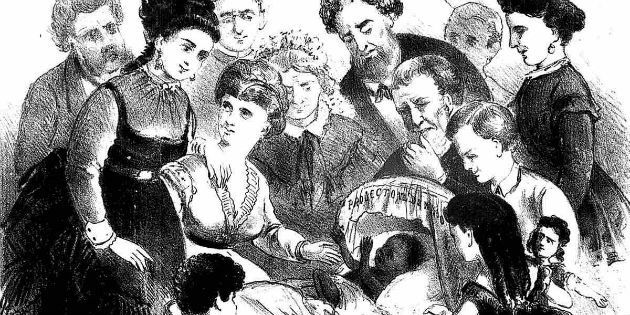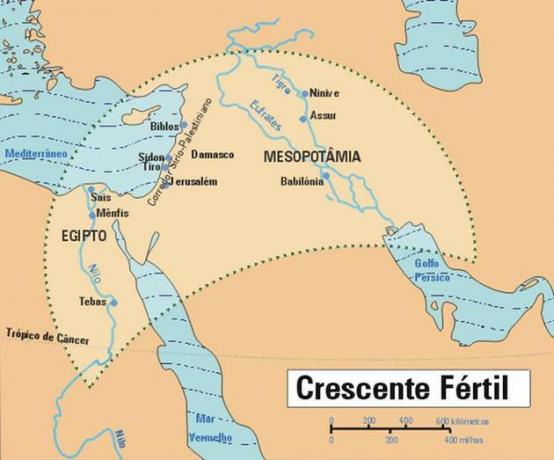THE law of the free womb or Rio Branco Law (Law nº 2040) is considered the first abolitionist law in Brazil.
It was presented by the Visconde do Rio Branco (1819-1880), of the Conservative Party, and sanctioned by Princess Isabel on September 28, 1871.
The law, among other resolutions, granted freedom to the children of slaves born after that date.
Summary of the Law of the Free Womb

The law of the Free Womb was born from the speech of Dom Pedro II during the opening of the legislative session of 1867. In the so-called "Speak of the Throne", the monarch asked legislators to draft projects that would gradually extinguish slavery in Brazil.
In this way, several deputies presented ideas such as the prohibition of the separation of spouses, the possession of slaves by the Church, and the release of the slave's son, as long as he was kept with the master until the age of majority.
All the measures caused controversy and the Senate received representations (undersigned) from both slavers and abolitionists.
The Paraguayan War (1865-1870) caused the discussions to be interrupted and prolonged in the following years.
In order to satisfy opposing interests, senator Visconde do Rio Branco draws up another law that is also the target of criticism. However, on September 28, 1871 he got his approval.
According to the Law of the Free Womb:
“Art. 1º The children of the slave woman who are born in the Empire, since the date of this law, will be considered free.
Paragraph 1 The said minor children will be in power and under the authority of the masters of their mothers, who will have the obligation to raise them up to the age of 8 years.
Paragraph 2 When the child of the slave arrives at this age, the master of the mother will have the option or to receive from the State to indemnify 600 milreis or to use the services of minors up to the age of 21 complete.”
Also this law freed:
Art. 6th Will be declared released:
§ 1 Slaves belonging to the nation, the Government giving them the occupation it deems convenient.
§ 2 The slaves given in usufruct to the Crown.
§ 3° Slaves of vague inheritances.
§ 4 Slaves abandoned by their masters. If they leave them for invalids, they will be forced to feed them, except in the case of shortage, and the food will be taxed by the Judge of Orphans.
The Free Womb Law also established the constitution of an emancipation fund, regulated manumissions and forced slaves to be registered - "enrolled" - which was carried out in 1872.
Thus, the Rio Branco Law or Lei do Ventre Livre was another step in the gradual abolition of slavery, controlled by the government and without compensation.
The slave's son was free, but was handed over to the government or remained on the farm or in the owner's house, with the family until he turned 21 years old. It could also be handed over to some government institution that would take care of it until adulthood.
Despite being ambiguous, as it did not immediately free the newborn child, the Lei do Ventre Livre represented an important advance towards the end of slavery in Brazil.
Criticism of the Free Womb Law
The law displeased both slave owners and various sectors of the abolitionist movement.
They claimed that the law would prolong slavery for another generation, leave minors at the mercy of the master, and say nothing about slaves born before that date.
Abolitionist Laws
Abolitionists, groups of intellectuals, ex-slaves, manumitted or fugitives, sought to end slavery in the country.
The formation of these groups was essential to accelerate this process, as they spread across the country producing abolitionist campaigns and created financial aid to free people enslaved.
Some owned their own newspapers, whose objective was to make the population aware of the horrors of slave labor, and to draw attention to the political and economic interests of this market.
Although they proved to be ineffective, the abolitionist laws had a great impact when they were enacted.
Eusébio de Queirós Law
Before the enactment of the Free Womb Law, the Eusébio de Queirós Law (Law No. 581), sanctioned on September 4, 1850, by Minister Eusébio de Queirós (1812-1868). It was aimed at ending the slave trade in the Atlantic Ocean.
This abolitionist law had little effect on account of the complicity between government officials and slave traders.
In turn, England pressured Portugal and Brazil to end slave labor, since the Industrial Revolution dawned in the country.
England used salaried labor in its Caribbean colonies, while Brazil continued with slavery and, therefore, produced cheaper.
Even with the enactment of the law, Portugal continued to send slaves to Brazil. It was only with the creation of the Nabuco Araújo law, in 1854, that the slave trade from Africa was curbed.
Sexagenarian Law
Later, the Sexagenarian Law (Law nº 3.270), also called the Saraiva-Cotegipe Law, proposed freedom for slaves over 60 years of age. It was promulgated on September 28, 1885, in the conservative government of the Baron of Cotegipe (1815-1889).
It represented yet another achievement for the country, towards the abolition of slavery. However, Brazil was the last country in the West to abandon slave labor.
Read more about:
- Golden Law
- Bill Aberdeen Law
Curiosities
- In the neighborhood of Vila Isabel, in Rio de Janeiro, a street was named "28 de Setembro" in honor of the Ventre Livre law.
- This law was signed by Princess Isabel when he acted for the first time as regent of the Empire, from May 1871 to March 1872.
Also read about this topic:
- Quilombos
- black movement
- slave trade
- Dom Pedro II


